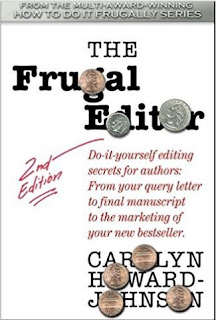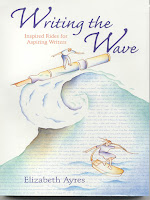
The Frugal Editor & Great Little Last Minute Editing Tips Combined Book Review of Carolyn Howard-Johnson's landmark Editing Books. Reviews by Deborah Lyn Stanley
Book Review || The Frugal Editor, Do-it-yourself editing secrets for authors: From your query letter to final manuscript to the marketing of your new bestseller by Carolyn Howard-Johnson
Today I am sharing my favorite self-editing book. Carolyn Howard-Johnson is a friend and co-contributor to Writer’s On The Move (WOTM). She is a consistent source of encouragement for the writer’s journey!
Carolyn’s delivery style is down to earth, illuminating, & frugal in its time saving, headache preventing approach. My favorite aspect of her book includes the basics required for an effective writer’s practice, and the seven thorough Appendices:
*Appendix One, “Editing At A Glance”,
*Followed by Recommended Reading & Resources,
*A Generous Agents List,
*Sample Cover and Sample Query Letters, and
*Formatting for Kindle Made Easy.
The Goal of the book is to equip aspiring and accomplished authors with the best self-editing skills and tips for successful publishing.
I highly recommend this book. It’s refreshing, informative and empowers our writers' journey.
Thank you Carolyn Howard-Johnson!
DON’T MISS THE FOLLOW ON …
Great Little Last-Minute Editing Tips for Writers, The Ultimate Frugal Reference Guide for Avoiding Word Trippers and Crafting Gatekeeper-Perfect Copy by Carolyn Howard-Johnson *second edition
My favorite self-editing book just got better, with its second edition addendum book of Great Little Last-Minute Tips. I enjoy Carolyn’s down-to-earth and humorous writing style. It enlightens, is a kick and prevents headaches too.
This little book is powerful with pointers from the depth of her knowledge, writing and editing expertise. This is NOT a boring grammar/editing book. Carolyn’s Word Trippers are full of surprises and fun to make us better writers, better communicators, and better at doing the job we set out to do.
I highly recommend this book, too!
Thanks again Carolyn Howard-Johnson!
Thank you, Carolyn Howard-Johnson for providing me a review book copy of “Great Little Last-Minute Editing tips for Writers”. I was not required to write a positive review, I receive no compensation, and it was my choice to write this review. All comments and opinions are solely my own.
Carolyn Howard-Johnson has been promoting her own books and helping clients promote theirs for more than a decade. Her marketing plan for the second book in the HowToDoItFrugally Series of books for writers, The Frugal Editor, won the Next Generation Millennium Award for Marketing. The just-released third edition of The Frugal Book Promoter, published by Modern History Press, is New, Expanded, and Updated. Her poetry, fiction and nonfiction books have been honored by the likes of Writer’s Digest, USA Book News Award, the Irwin award, Dan Poynter’s Global Ebook Awards and more. Learn more about Carolyn and her books of fiction and poetry. Each of them helped her learn more about maximizing marketing efforts for different writers, different titles. Learn more at www.howtodoitfrugally.com
Links:
https://howtodoitfrugally.com/
http://www.writersonthemove.com/
Deborah Lyn Stanley is an author of Creative Non-Fiction. She writes articles, essays and stories. She is passionate about caring for the mentally impaired through creative arts.
Visit her My Writer’s Life website at: https://deborahlynwriter.com/
Visit her caregiver’s website: https://deborahlyncaregiver.com/
Mom & Me: A Story of Dementia and the Power of God’s Love is available:
https://www.amazon.com/Deborah-Lyn-Stanley/
& https://books2read.com/b/valuestories
Share on LinkedIn
https://www.linkedin.com/
And more via the icon bar below:





























